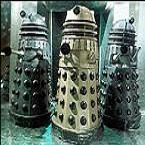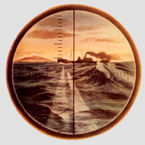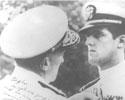Paul Vebber
Posts: 11430
Joined: 3/29/2000
From: Portsmouth RI
Status: offline

|
quote:
I was thinking IS 1,2+3 and Su series
The IS series was a heavy tank replacement for the KV-1 and the SU were assult guns and TDs.
Medium tank development after the T-34 was teh T-43 (beaten out by the T-34/85, and T-44, an attempt at a "clean sheet" T-34 development that had mechanical difficulties, but was the basis for the eventual T-54/55 design. T-44 units were all replaced by T-34/85s due to logistical issues leving the T-34 the SOviets Medium tank throughout the war.
quote:
Maybe you meant the M24 or the tank destroyers but i was talking about AFV's
um, technically halftracks, are "AFV" - armored fighting vehicles - light tanks and TD's certainly are.
I'm sure what he was talking about was the 1942 effort to create an "infantry tank" that could survive to support infantry in the manner of the British doctrine. It was thought that a design that fell between the British Valentine and Churchill designs in weight with better speed and gun would fit the bill. The unsuitabilty of the US Mk6 heavy tank quickly saw the requirement change to heavier vehicle that could perform the infantry support mission, but also operate as a heavy tank. The result was the T2X series of a handful of designs that was winnowed down to the T26. Significantly lighter at just over 40 tons, than the nearly 60 ton M6, it was, llike the German Panther, really a protypical MBT.
Development issues of various sorts delayed its planned introduction from Mid 44 (In mid 42 the goal was a tank that would participate in the European Invasion anticipated at the time to be in late 43, but as the date slipped, development slipped, until the two became uncoupled and D-Day planning as the M10 and M-36 were seen as the answer to German Panther and Tiger encounters being more common than anticipated prior to the invasion.
Had the Pershing development not suffered the delays it did, Pershings could well have been reaching Europe at least in the time frame of the M-36 in Sept 44.
US and Soviet development were really much the same - The SOviets focused on modififications to the T-34, the 1941 version and the T-34/85 being as different as the early M4s and the Easy 8s. The Soviets pursued a Heavy tank to slug it out with Tigers and Panthers as their doctrine dictated, and really never developed a bonafide "MBT" until after the war with the T-54/55 and even then the IS-3/T-10 series was produced for some time. The US dabbled with a few heavy tank designs and fielded a few hundred M103s but nowhere near the numbers the Soviets did. The Soviets didn't fully embrace the MBT concept until the T-62.
quote:
The chief of AGF may have scuppered the deal , but how is this acceptable?
The Armor branch only suffered 3.5% of US Army casualties (per T Dupuy - "Attrition") and the rate of casualties in the Armor brach never was more than 15% in a given year. COmpared to 80% of casualties in the Infantry and over 25% casualties in the worst year, the Sherman was not deemed as doing all that bad.
Acceptable is realtive, and relatively speaking, the Sherman +TD team was not doing all that bad.
quote:
1944 is not often regarded as the start of WW2.
But it WAS the start of significant Allied interaction with Panther armed battalions. They had their encounters with Tigers in NA, and a few Panthers in ITaly, but based on those encounters they felt that encounter rates after D-Day would be similar, particualrly giventhe way things were going in the East. It was speculated that the vast majority of German heavy tanks would be used in the east to face Soviet tanks.
It was also when the Pershing was origianlly envisioned to be joining the force...
Also note that per Wikipedia the 37mm PaK 36 - MV 762 m/sec, wt = 0.68kg, pen @ 500m 29-31mm @ 30 degrees
M3 37mm MV 884 m/sec, wt 0.87 kg, pen at 914mm 46mm @ 30 degrees
A faster, heavier shell that, even at nearly twice teh range has 50% more penetration. Yet is "equivalent" 
< Message edited by Paul Vebber -- 2/7/2007 12:10:04 AM >
|
 Printable Version
Printable Version



























 New Messages
New Messages No New Messages
No New Messages Hot Topic w/ New Messages
Hot Topic w/ New Messages Hot Topic w/o New Messages
Hot Topic w/o New Messages Locked w/ New Messages
Locked w/ New Messages Locked w/o New Messages
Locked w/o New Messages Post New Thread
Post New Thread